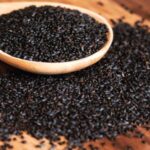Goose meat, with its darker hue, offers a flavor profile that surpasses that of chicken or duck. It is a delicacy with a rich, exquisite taste. However, it is important to note that goose meat also boasts the highest fat content among poultry. While it offers nutritional benefits, there are certain parts of the goose that are best avoided or consumed in moderation.

The internal organs of a goose, such as the liver, gizzard, and intestines, contain high levels of cholesterol. These parts are particularly susceptible to parasites, bacteria, and viral infections. The liver, due to its function of filtering toxins, can accumulate heavy metals and harbor diseases. Therefore, when cooking goose liver, it is imperative to ensure it is thoroughly cooked to eliminate any harmful viruses. Pregnant women and individuals with gout are advised to refrain from consuming goose liver due to potential health risks.
Goose skin, while crispy and tempting, should also be consumed sparingly. It contains high amounts of fat and cholesterol, which can be detrimental to individuals with high blood fat levels. Additionally, the skin can be a breeding ground for bacteria and viruses and may contain soluble toxins. For those with sensitive conditions such as asthma or rheumatism, consuming goose skin may trigger itching, rashes, and even difficulty breathing.

The crop, or pao cau in Vietnamese, is the fattiest part of the goose and other poultry. Consuming it in large quantities is not recommended. Similarly, goose wing fat, derived from the skin, should be consumed in moderation, especially by individuals with heart disease, fat metabolism disorders, kidney stones, gallstones, or obesity.
It is important to note that the potential harm from consuming these parts is generally negligible unless one consumes excessive quantities over an extended period. Enjoy goose meat in moderation, and always ensure proper cooking techniques to minimize any potential risks.
For more insightful articles and tips, be sure to explore our website’s category section. Stay informed and make healthier choices!
The 5 Unforeseen Dangers of Improper Makeup Application
The chemicals in cosmetics, when in frequent contact with the skin, can cause irritation, inflammation, and even damage to the skin’s natural protective barrier. This is a growing concern for many consumers who are now seeking natural and organic alternatives. With a plethora of natural ingredients available, there is a growing trend towards formulating cosmetics with botanical extracts and natural oils that nourish and protect the skin, offering a safer and healthier alternative to traditional cosmetics.











































